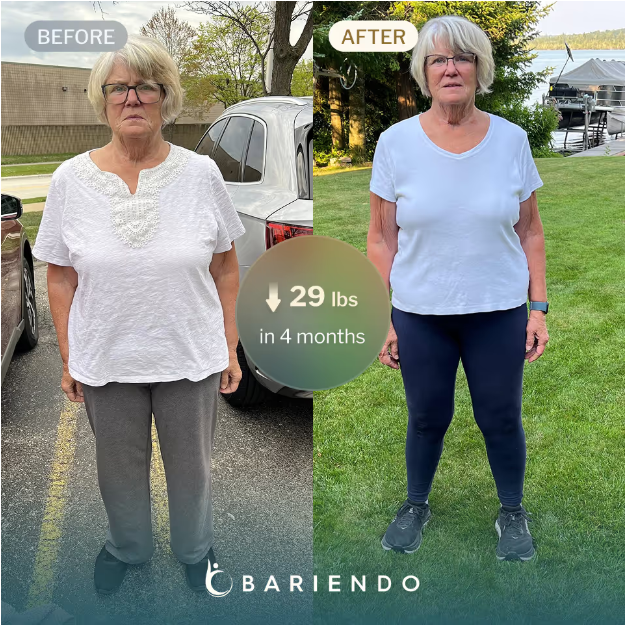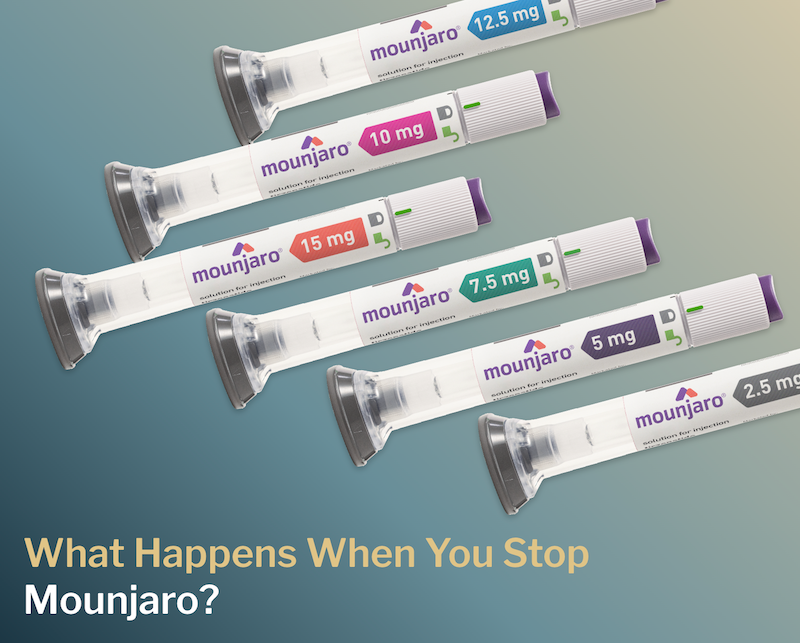Gastric Sleeve Recovery Time: What to Expect After Surgery
Discover what recovery after gastric sleeve surgery really looks like, common side effects, and a less invasive, equally successful alternative.

Bariendo Team
Team @ Bariendo
If you’re considering weight loss surgery, you’re likely weighing benefits against recovery, complications, and time away from work or family. Understanding what recovery truly looks like is essential to making an informed decision.
This guide covers the gastric sleeve recovery timeline, common side effects, and what to expect during healing. We’ll also explore a less invasive alternative that offers comparable weight loss results with significantly shorter recuperating time.
What Exactly is a Gastric Sleeve?
The gastric sleeve, also known as sleeve gastrectomy, is a surgical weight loss procedure that permanently reduces the size of your stomach by approximately 80%. Surgeons do this by making small abdominal incisions and using laparoscopic techniques to remove part of the stomach. The doctor then shapes the remaining stomach tissue into a narrow, tube-like structure.
This bariatric surgery limits how much you can eat at one time and reduces hunger by removing the portion of the stomach that produces ghrelin—i.e., an appetite-regulating hormone. This way, patients feel satisfied faster, which leads to weight loss.
Recovery Time for Gastric Sleeve Surgery: Common Questions
Before deciding on any type of bariatric procedure, you need to understand what it entails, especially when considering a permanent one like the gastric sleeve. You’re probably wondering how long is recovery from gastric sleeve surgery, what does the healing process actually look like, or how you’ll feel afterward.
Understanding the gastric sleeve surgery recovery time helps you plan accordingly and set realistic expectations for your healing journey. Here are answers to commonly asked questions about this procedure.
How long do I have to stay in the hospital before going home?
Most patients remain in the hospital for one to three days and can return to work within two to four weeks, depending on activity level. Medical staff will monitor vital signs and manage pain during this time.
How many days do I need to take off work for gastric sleeve surgery?
The back to work bariatric surgery recovery time varies, but most patients can return to normal activities within two to four weeks. If your job involves heavy lifting, prolonged standing, or strenuous physical activity, you may need to take four to six weeks off or arrange for modified duties during your initial return. Sedentary workers may return sooner.
Do I need to change my diet after gastric sleeve surgery?
Yes, dietary changes are mandatory and lifelong after gastric sleeve surgery. Your eating plan progresses over the first two to three months, starting with liquids and gradually incorporating solid foods.
Long-term, you’ll need to eat smaller portions, chew thoroughly, avoid liquids with meals, and take daily vitamin and mineral supplements to prevent nutritional deficiencies. Patients who don’t maintain a healthy lifestyle after this surgery, will likely need a gastric sleeve revision in a couple of years.
How many weeks until I can exercise after the sleeve surgery?
Recovering patients are encouraged to perform light activities such as short walks within the first one to two weeks. This promotes circulation and prevents blood clots. However, you’ll need to avoid strenuous exercise, heavy lifting, and high-intensity workouts for at least six to eight weeks after surgery. Full healing and return to normal activities takes approximately six to eight weeks.
Do I need to wait to get pregnant after gastric sleeve surgery?
Yes, experts recommend waiting 12 to 18 months before trying to conceive. This waiting period allows your body to adjust during rapid weight loss. Pregnancy during this time increases the risk of nutritional deficiencies that could affect both you and your developing baby. Additionally, your weight and eating patterns need time to stabilize before supporting a healthy pregnancy.
If you get pregnant during this time, notify your OB/GYN about your bariatric surgery and monitor the development closely.
Common Side Effects of the Gastric Sleeve Surgery
While generally safe, the gastric sleeve carries potential complications including:
- Malnutrition and vitamin deficiencies. The reduced stomach size limits food intake, making it challenging to meet nutritional needs through diet alone. Patients commonly develop deficiencies in vitamins B12, D, iron, calcium, and folate, requiring lifelong supplementation and regular blood work monitoring.
- Nausea and vomiting. Many patients experience frequent nausea and vomiting, especially during the first few months after surgery. Eating too quickly, not chewing enough, or consuming foods your new stomach doesn’t tolerate can trigger these symptoms.
- Gastroesophageal reflux disease (GERD). Some patients develop new or worsening acid reflux after gastric sleeve surgery. In severe cases, this may require additional medication or even revision surgery. “I’m basically living on Omeprazole 40mg every day. I can’t go off the medication a single day without having a bad heartburn,” shares a patient on r/gastricsleeve.
- Gallstones. Rapid weight loss increases the risk of developing gallstones, which may require additional surgery to remove the gallbladder.
- Dumping syndrome. When food moves too quickly into the small intestine, it can cause cramping, nausea, diarrhea, and dizziness, particularly after consuming sugary or high-fat foods.
- Leaks. Although rare, leaks can occur along the staple line. This serious complication requires immediate medical attention.
- Blood clots. As with any major surgery, there’s an increased risk of blood clots forming in the legs or traveling to the lungs.
- Hair loss. Temporary hair thinning or loss is common during the rapid weight loss phase due to nutritional changes and stress on the body.
Also, some say that they were never able to simply enjoy food after surgery. “I’ve had to give up being able to eat or drink without thinking. I’m very aware of how many calories I’m putting in my body, which can be mentally taxing,” shares a patient on r/gastricsleeve.
A Non-Surgical Alternative to the Gastric Sleeve: ESG Stomach Tightening
While some people claim the gastric sleeve ruined their lives, many still believe the benefits are worth the burden. However, there are less invasive, equally effective weight loss procedures that offer you a better experience.
For those seeking a non-surgical weight loss procedure without the extended recovery time and irreversibility of surgery, there’s an alternative worth considering: ESG Stomach Tightening.
What is the ESG Stomach Tightening?
ESG (Endoscopic Sleeve Gastroplasty) Stomach Tightening is a minimally invasive, non-surgical procedure that reduces stomach size from the inside using an endoscope. Unlike gastric sleeve surgery, ESG is performed entirely through the mouth. During the procedure, a physician moves a flexible endoscope down the esophagus and into the stomach, then places a series of sutures to reduce its capacity by approximately 70%. The procedure takes 60–90 minutes under sedation.
Because physicians make no incisions and permanently remove no tissue, ESG isn’t classified as surgery. This distinction is significant when considering recovery time, risk profile, and the reversibility of the procedure.
How is the ESG Stomach Tightening different from the gastric sleeve?
The fundamental difference between the ESG and the gastric sleeve lies in the approach and invasiveness. The gastric sleeve is a surgical procedure requiring general anesthesia, multiple abdominal incisions, permanent removal of stomach tissue, and a few days of hospitalization.
The ESG stomach tightening, on the other hand, is a minimally invasive endoscopic approach with no external incisions. According to Dr. Pichamol Jirapinyo, co-founder of the Bariatric Endoscopy Fellowship at Brigham and Women’s Hospital, ESG provides similar stomach size reduction as the gastric sleeve but with significantly lower recovery time and risk. Physicians perform it under moderate sedation, allowing same-day discharge.
Plus, since ESG doesn’t permanently remove any part of the stomach, it’s technically reversible if medically necessary. The procedure carries a lower risk profile compared to sleeve surgery, with fewer potential complications. Both procedures require dietary modifications and lifestyle changes for optimal results.
Recovery time from the ESG Stomach Tightening: Common questions
While ESG is minimally invasive, patients often have questions about how quickly they can return to daily activities, work, and exercise. Some common inquiries include:
How long do I have to stay in the hospital before going home?
ESG stomach tightening requires no hospital stay. Patients go home the same day, typically within a few hours after the procedure once the sedation has worn off, and they’re cleared by medical staff.
How many days do I need to take off work for ESG stomach tightening?
Most patients return to work within two to four days following the ESG procedure. Many people feel well enough to resume light daily activities within one to two days, though you should avoid strenuous activity during this initial period.
Do I need to change my diet after ESG stomach tightening?
Yes, dietary modifications are necessary and similar to those following gastric sleeve surgery, though the progression timeline may differ slightly. You’ll follow a staged diet plan, starting with liquids and gradually advancing to solid foods. Long-term success requires adopting healthier eating habits, smaller portion sizes, and mindful eating practices.
How many weeks until I can exercise after the ESG procedure?
Light activities can typically resume within a few days. Most patients can return to all normal activities, including regular exercise routines, within two to four weeks after the ESG stomach tightening procedure.
Do I need to wait to get pregnant after ESG stomach tightening?
Like with the gastric sleeve, it’s recommended you wait 12–18 months before attempting pregnancy to allow weight and nutrition to stabilize.
Expected results with the ESG Stomach Tightening procedure
Clinical studies show that patients can lose up to 18% of their total body weight within one year following the ESG stomach tightening procedure. For someone weighing 250 pounds, this could translate to approximately 45 pounds of weight loss in a year. Individual results vary based on adherence to dietary recommendations, exercise habits, and other lifestyle factors.
Real patients have achieved remarkable transformations with ESG Stomach Tightening. The success stories at Bariendo demonstrate consistent weight loss results combined with improved health markers, increased energy, and enhanced quality of life. Karen, a Bariendo client, says “If you are on the fence about having an ESG, don’t wait! I highly recommend Bariendo for their procedure expertise and follow-up care.”
At Bariendo, we aim to offer first-class service as our co-founder, Dr. Christopher Thompson, is the same person who developed the ESG Stomach Tightening technique. He also personally vets all physicians performing the procedure, guaranteeing a top-notch experience.
Additionally, Bariendo offers a comprehensive 12-month follow-up program with access to nurses, dietitians, and other healthcare professionals, complete price transparency with flexible financing options, and doctors located across the United States.
Final Thoughts: Gastric Sleeve Recovery, is it All Worth it?
The gastric sleeve can be an effective weight loss tool for appropriate candidates, but the recovery process is substantial. You’re looking at one to three days in the hospital, two to four weeks before returning to work, and six to eight weeks until complete healing. The procedure is permanent and irreversible, carrying surgical risks and requiring lifelong dietary modifications and supplementation. The financial impact, including hospital stays, time off work, and complications, can also be substantial.
For many people seeking weight loss without the extended recovery time and invasiveness of surgery, ESG Stomach Tightening presents a compelling alternative. With same-day discharge, return to work in just two to four days, and comparable weight loss results, ESG offers the benefits of gastric sleeve with significantly less downtime and disruption to your life.
The decision between procedures is personal and depends on your individual circumstances, health status, and weight loss goals. If you’re weighing different surgical options, comparing gastric sleeve vs gastric bypass or the gastric balloon can also help you understand the full spectrum of available bariatric procedures.
If you’re ready to review your options, explore our prices to understand the financial investment. Your journey toward better health, increased energy, and renewed confidence starts with a single conversation. Book a free consultation to discuss whether ESG stomach tightening is right for you.

